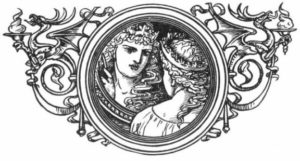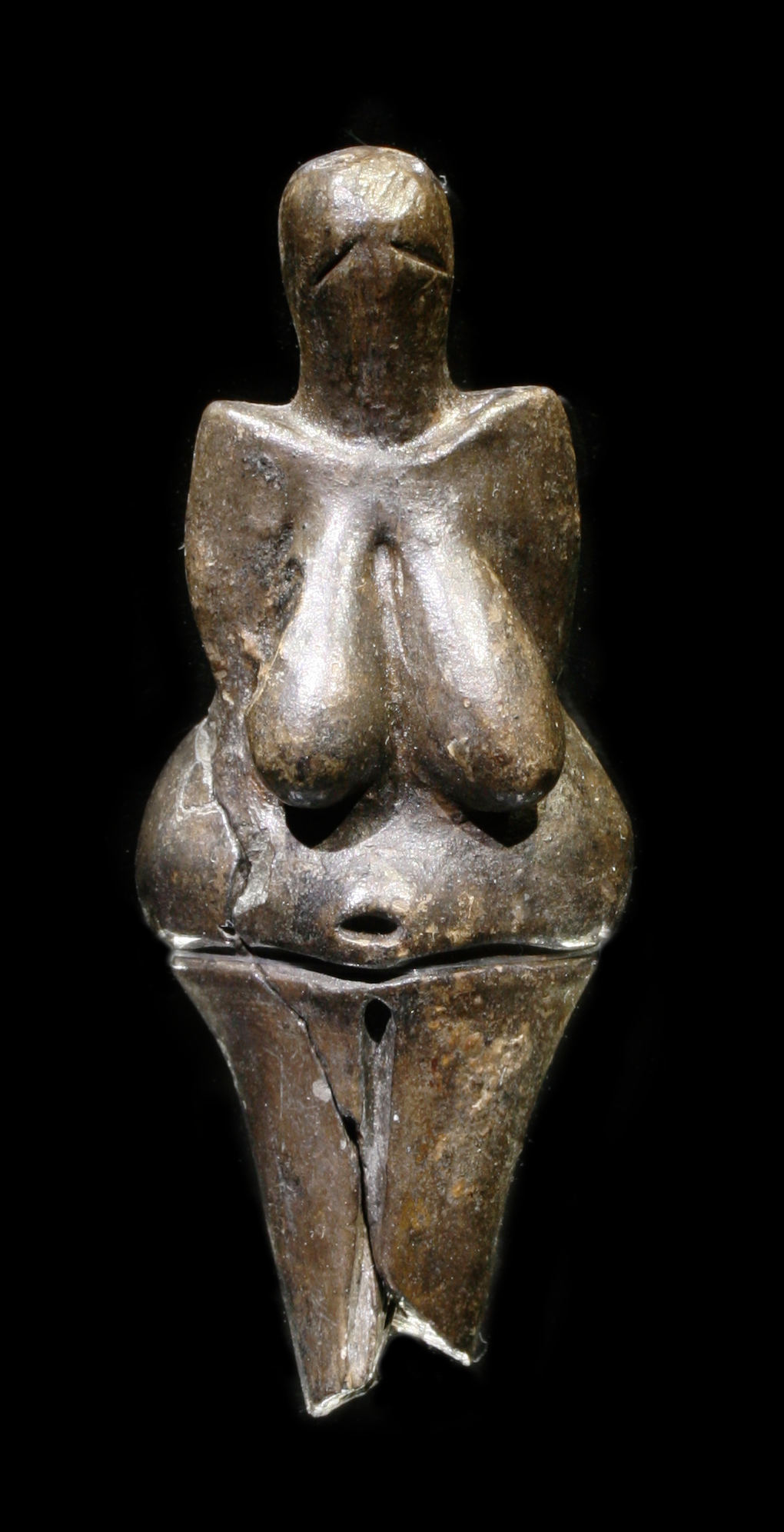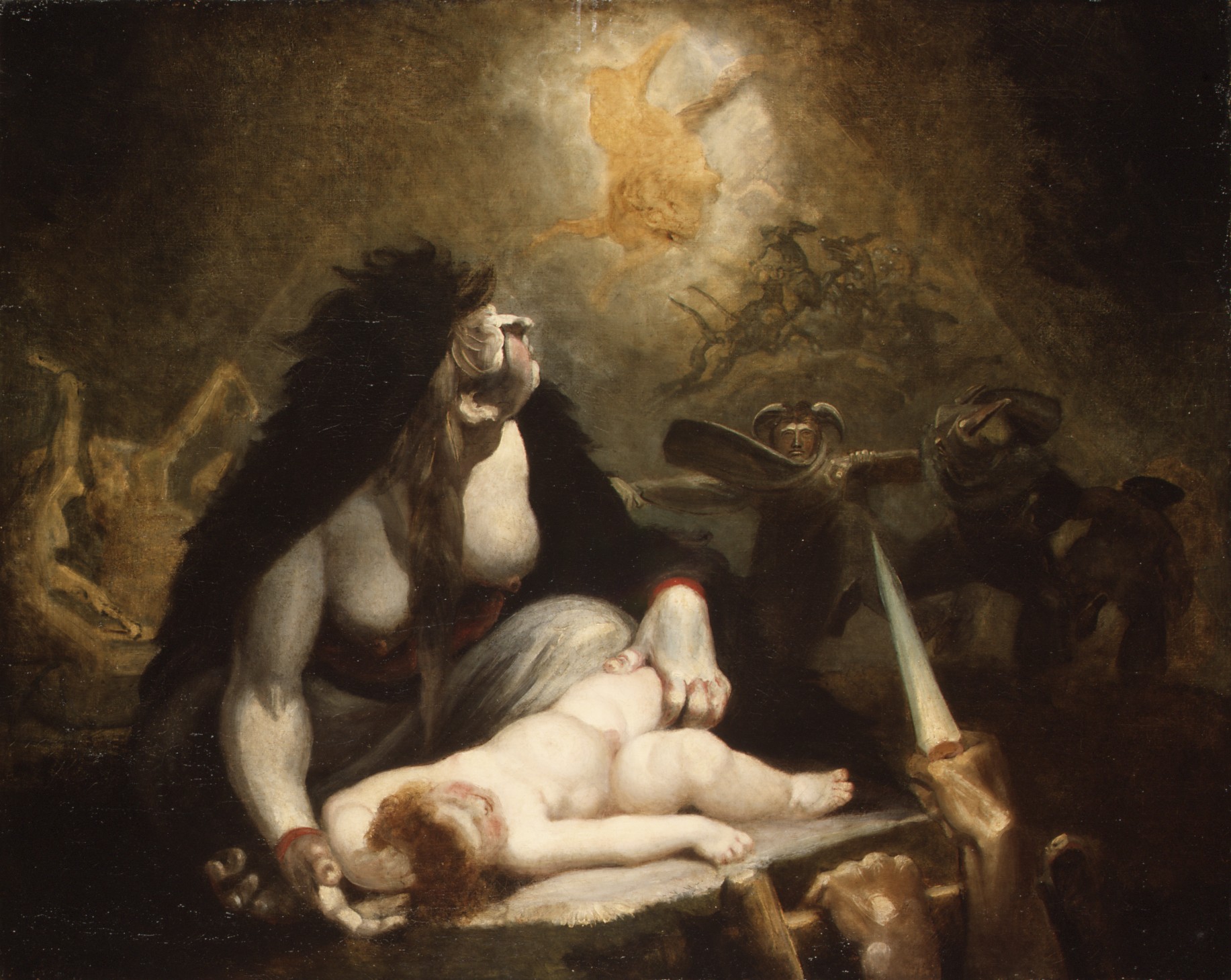“Mirror mirror on the wall, who in this land is fairest of all?”
Whether we first heard these words read to us as a bedtime story, or in a darkened theater, enthralled by the Disney version of Snow White and the Seven Dwarfs, (where it was actually “Magic mirror on the wall,” although most people remember it otherwise), the queen’s imperious question casts a spell. We know trouble will soon follow. Even the littlest girls get it and hold their breath in anticipation and concern. “Fairest of all” shocks us with its competitive edge, touching a core part of our feminine selves. Attractiveness, it presumes, determines our status and value as a female. Beauty, we will come to understand, is an asset, but also a curse.
 Vanity and envy are the twin engines that drive the story of “Sneewittchen,” the title used by Jacob and Wilhelm Grimm when they recorded the folktale in 1812. It became “Little Snow-White” in English translations based on the Grimms’ final 1857 version of the tale. Most fairy tales originate as oral stories repeated over generations and reflect older strata of cultural development when humans lived closer to nature and the membrane between the real and the imagined was more porous. Birds spoke to humans, the wind was a spirit, and giants trod the earth. The collected fairy tales we know today are a distillation of many iterations, the product of countless imaginations told by many tellers. But despite their ancient origins, fairy tales remain relevant to our postmodern selves and depict the dramas of the human soul, one of which is the confrontation with evil. This frequent motif reflects our experiences with destructive forces symbolized by giants, trolls, witches and monsters. The tales suggest ways to recognize and discern good from evil and provide solutions to life-threatening challenges.
Vanity and envy are the twin engines that drive the story of “Sneewittchen,” the title used by Jacob and Wilhelm Grimm when they recorded the folktale in 1812. It became “Little Snow-White” in English translations based on the Grimms’ final 1857 version of the tale. Most fairy tales originate as oral stories repeated over generations and reflect older strata of cultural development when humans lived closer to nature and the membrane between the real and the imagined was more porous. Birds spoke to humans, the wind was a spirit, and giants trod the earth. The collected fairy tales we know today are a distillation of many iterations, the product of countless imaginations told by many tellers. But despite their ancient origins, fairy tales remain relevant to our postmodern selves and depict the dramas of the human soul, one of which is the confrontation with evil. This frequent motif reflects our experiences with destructive forces symbolized by giants, trolls, witches and monsters. The tales suggest ways to recognize and discern good from evil and provide solutions to life-threatening challenges.
 Fairy tales set down no single way to deal with evil. In some stories, the heroine outsmarts the opposition, as Gretel does in “Hansel and Gretel” when she pushes the witch into her own oven. In other tales, flattery wins over the devil; in others, a physical battle is required. Sometimes the hero, aided by magical helpers, must become invisible so as not to be seen by the enemy or must simply fly away. In fairy tales characters are typological rather than psychological. They encapsulate known “types” rather than individuals—the king, the queen, the fisherman and his greedy wife, the selfish sisters, the abandoned child. This makes it easy to identify victims and perpetrators.
Fairy tales set down no single way to deal with evil. In some stories, the heroine outsmarts the opposition, as Gretel does in “Hansel and Gretel” when she pushes the witch into her own oven. In other tales, flattery wins over the devil; in others, a physical battle is required. Sometimes the hero, aided by magical helpers, must become invisible so as not to be seen by the enemy or must simply fly away. In fairy tales characters are typological rather than psychological. They encapsulate known “types” rather than individuals—the king, the queen, the fisherman and his greedy wife, the selfish sisters, the abandoned child. This makes it easy to identify victims and perpetrators.
By taking a closer look at these absolute types, we can spot what roles have dominated our psyches.
Evil is a source of suffering, but enduring suffering brings with it a new level of consciousness, a mature personality, and if we are lucky, wisdom. Fairy tales often begin with a state of deficiency. The king has died or the queen is barren or the poor miller has no money. A crisis ensues that begets suffering, symbolic of psychological pain. The hero or heroine takes up the task to resolve the crisis and end the suffering; radical transformation is in the making. Just so, crises in our own lives can precipitate a search for meaning and a transformation of self.
 In “Little Snow-White,” a stepdaughter is persecuted by a stepmother for having something the latter wants: youth and beauty. As in real life, envy provides the fuel for ruthless behavior. In the case of Snow White, the envier demands nothing less than the total annihilation of the envied one.
In “Little Snow-White,” a stepdaughter is persecuted by a stepmother for having something the latter wants: youth and beauty. As in real life, envy provides the fuel for ruthless behavior. In the case of Snow White, the envier demands nothing less than the total annihilation of the envied one.
The D. L Ashliman translation of the 1857 version of “Little Snow-White” opens this way:
Once upon a time in midwinter, when the snowflakes were falling like feathers from heaven, a queen sat sewing at her window, which had a frame of black ebony wood. As she sewed she looked up at the snow and pricked her finger with her needle. Three drops of blood fell into the snow. The red on the white looked so beautiful that she thought to herself, “If only I had a child as white as snow, as red as blood, and as black as the wood in this frame.
Soon afterward she had a little daughter who was as white as snow, as red as blood, and as black as ebony wood, and therefore they called her Little Snow-White. And as soon as the child was born, the queen died.
The opening scene occurs in winter when life is buried under a layer of coldness. A wistful mother longs for a child, a daughter like herself. She pricks her finger and drops of blood splatter on the frozen ground, hinting at an ominous situation to come. We soon learn that when the child is born, the mother dies. Here, then, is the deficiency at the beginning of the tale: the absent mother and the motherless child. We are next told that the king, now mentioned for the first time, has taken another wife, “a proud and arrogant” woman. The new queen is Snow White’s stepmother.
 In fairy tale language, the stepmother embodies traits we associate with evil: rage, envy, jealousy, greed, self-absorption, cunning cleverness, and uncanny powers. Rarely do we meet a kindly stepmother, for like all fairy tale figures, the stepmother is an archetypal symbol not an illustration of a real individual whose feelings, emotions, and thoughts we are privy to. The wicked stepmother contains all that we fear and loathe in the feminine, a female devil whose diabolical nature and brutality frighten us. Unlike her male counterparts, the monsters and Bluebeards who inhabit other tales and engage in bloody combat and wizardry, the witch/stepmother’s weapons of choice are more devious— gossip, poison, and directing others to do her dirty work. Her power to bewitch and the inexhaustible amount of energy she expends to carry out her nasty wishes is the stuff of nightmares. She is the hag on a broomstick, mad Bertha locked in the attic in Bronte’s Jane Eyre; she is Cruella De Vil. In fact, in a 2014 UK survey, one-third of the 2,000 adults polled voted the Evil Queen in “Snow White” to be “the scariest fairy tale character of all time.”
In fairy tale language, the stepmother embodies traits we associate with evil: rage, envy, jealousy, greed, self-absorption, cunning cleverness, and uncanny powers. Rarely do we meet a kindly stepmother, for like all fairy tale figures, the stepmother is an archetypal symbol not an illustration of a real individual whose feelings, emotions, and thoughts we are privy to. The wicked stepmother contains all that we fear and loathe in the feminine, a female devil whose diabolical nature and brutality frighten us. Unlike her male counterparts, the monsters and Bluebeards who inhabit other tales and engage in bloody combat and wizardry, the witch/stepmother’s weapons of choice are more devious— gossip, poison, and directing others to do her dirty work. Her power to bewitch and the inexhaustible amount of energy she expends to carry out her nasty wishes is the stuff of nightmares. She is the hag on a broomstick, mad Bertha locked in the attic in Bronte’s Jane Eyre; she is Cruella De Vil. In fact, in a 2014 UK survey, one-third of the 2,000 adults polled voted the Evil Queen in “Snow White” to be “the scariest fairy tale character of all time.”
 As a universal figure, the witch or stepmother or evil-doing woman reappears in fairy tales across time and continents. That she is a mother and cruel engenders in us a peculiar dread. The wicked mother figure presents a paradox: if we are to survive childhood, we need our mothers to nurture us, but the evil mother wishes to devour our being. We fear her ravenous desire for power, her one-sided narcissism and obsessive nature as we fear our own hunger for power and rage, the split-off and dissociated qualities in ourselves C. G. Jung called our shadow, those despised parts of self we project onto others. In psychological terms, the denial of what is most troubling in us is a primitive defense mechanism that strives to keep us ignorant of what we are unwilling to face. In “Snow White” we have the positive and negative aspects of the feminine self. While the queen is “all bad,” Snow White is too good, too pure, too innocent, and thus unable to discern the evil in her midst. Psychologically speaking, the unacknowledged dark forces within her have been projected onto her stepmother. However, being “the good one” does not prevent suffering; in her regressed childlike state, Snow White is vulnerable; she fails the test of each of the three temptations offered by the queen, and becomes immured in a glass coffin.
As a universal figure, the witch or stepmother or evil-doing woman reappears in fairy tales across time and continents. That she is a mother and cruel engenders in us a peculiar dread. The wicked mother figure presents a paradox: if we are to survive childhood, we need our mothers to nurture us, but the evil mother wishes to devour our being. We fear her ravenous desire for power, her one-sided narcissism and obsessive nature as we fear our own hunger for power and rage, the split-off and dissociated qualities in ourselves C. G. Jung called our shadow, those despised parts of self we project onto others. In psychological terms, the denial of what is most troubling in us is a primitive defense mechanism that strives to keep us ignorant of what we are unwilling to face. In “Snow White” we have the positive and negative aspects of the feminine self. While the queen is “all bad,” Snow White is too good, too pure, too innocent, and thus unable to discern the evil in her midst. Psychologically speaking, the unacknowledged dark forces within her have been projected onto her stepmother. However, being “the good one” does not prevent suffering; in her regressed childlike state, Snow White is vulnerable; she fails the test of each of the three temptations offered by the queen, and becomes immured in a glass coffin.
 Fairy tales and dreams share a compensatory function in alerting us to unconscious elements in our psyches. The witchy woman in our dreams may well symbolize some stifled, raging, but unrecognized part of ourselves. The stepmother stands in contradistinction to “the good mother” whose qualities lie on the other end of the spectrum. The “good mother” is all loving, giving, caring, beautiful, kind. But she is often too passive, too innocent, or too weary to protect her child. In this tale as in many others, the good mother dies at the outset, leaving the daughter the task of having to find the path to maturity.
Fairy tales and dreams share a compensatory function in alerting us to unconscious elements in our psyches. The witchy woman in our dreams may well symbolize some stifled, raging, but unrecognized part of ourselves. The stepmother stands in contradistinction to “the good mother” whose qualities lie on the other end of the spectrum. The “good mother” is all loving, giving, caring, beautiful, kind. But she is often too passive, too innocent, or too weary to protect her child. In this tale as in many others, the good mother dies at the outset, leaving the daughter the task of having to find the path to maturity.
For Snow White, the death of her real mother and the arrival of a stepmother appears to portend disaster, but the challenges presented by the new queen’s cruelty are actually good news for Snow White. As Terri Windling notes in her wonderful blog post “Snow, Glass, Apples: The Story of Snow White,” “Unlike sons who set off to win their fortune, who are journeying toward adventure, the daughters are outcasts, running away. The princes usually return at the end of the story, bringing treasure and magical brides. Princesses do not return; they must forge new lives, new alliances.”
By forcing her to leave home, grow up, and discover who she is, the stepmother’s malevolence moves our heroine along the path to self-discovery and resilience ending in her psychological growth. The cruel queen makes three attempts to kill her competition, and with each attempt the younger woman is seduced by her own desire and narcissism, accepting the laces, poisoned comb, and ultimately the poisoned apple from the disguised queen. Until she faces the existence of evil and her own naiveté, Snow White will remain a child.
If you’d like to chew on one aspect of this story, consider this: “Little Snow White” is a story about emotional development set in motion by the arrival of evil. The tale has a satisfying ending: the evil queen dances herself “to death in red-hot iron shoes.” Yet we must remember: we have the evil to thank for the plot twists that lead to Snow White’s awakening. In stories as in life, evil sometimes gets the ball rolling. Without the evil stepmother, there would be no story.
This post appeared in a slightly different form on Dale’s blog on Psychology Today. You can find all of Dale’s blog posts for Psychology Today at
If you found this post interesting, you may also want to read “Write Your Own Fairy Tale,” “Given Away: The Plight of the Wounded Feminine,” and “The Hero’s Journey in the Time of COVID.”
Keep up with everything Dale is doing by subscribing to her newsletter, Exploring the Unknown in Mind and Heart.




